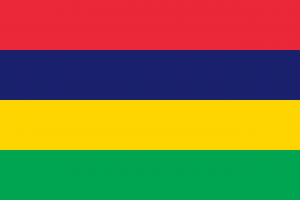Difference between revisions of "Language/Morisyen/Grammar/Questions"
m (Quick edit) |
m (Quick edit) |
||
| Line 57: | Line 57: | ||
As you can see, asking questions in Morisyen is quite straightforward. With a little practice, you'll be able to ask questions with confidence. And if you ever need help, you can always turn to the Polyglot Club community (PolyglotClub.com) for support. <br><hr>If you have any questions, please ask them in the comments section below.<br>Feel free to edit this wiki page if you think it can be improved. 😎 | As you can see, asking questions in Morisyen is quite straightforward. With a little practice, you'll be able to ask questions with confidence. And if you ever need help, you can always turn to the Polyglot Club community (PolyglotClub.com) for support. <br><hr>If you have any questions, please ask them in the comments section below.<br>Feel free to edit this wiki page if you think it can be improved. 😎 | ||
==Related Lessons== | |||
* [[Language/Morisyen/Grammar/Plurals|Plurals]] | |||
* [[Language/Morisyen/Grammar/Conditional-Mood|Conditional Mood]] | |||
* [[Language/Morisyen/Grammar/Negation|Negation]] | |||
* [[Language/Morisyen/Grammar/Future-Tense|Future Tense]] | |||
{{Morisyen-Page-Bottom}} | {{Morisyen-Page-Bottom}} | ||
Revision as of 22:54, 25 February 2023
Hi Morisyen learners! 😊
In today's lesson, we will be learning how to ask questions in Morisyen. Asking questions is an important part of any language, and it's essential to understand the rules of Morisyen grammar in order to do so correctly. We'll cover the basics of forming questions, as well as some more advanced topics. So let's get started!
Basic Question Formation
The basic structure for forming a question in Morisyen is quite simple. All you need to do is add the particle "ma" to the beginning of the sentence. For example:
- Statement: "I am going to the store."
- Question: "Ma i go to the store?"
This works for both yes/no questions and wh-questions. For example:
- Yes/No Question: "Do you like ice cream?"
- Ma you like ice cream?
- Wh-Question: "Where are you going?"
- Ma where you go?
Negating Questions
If you want to make a negative question, you can use the particle "mata". For example:
- Statement: "He is not coming."
- Question: "Mata he come?"
Intonation
It's also important to note that the intonation of a question in Morisyen is different from that of a statement. When asking a question, the intonation should rise at the end of the sentence. This helps to distinguish questions from statements.
Advanced Topics
Once you have mastered the basics of question formation, there are some more advanced topics you can explore.
Tag Questions
Tag questions are a great way to confirm information or to check if someone agrees with you. To form a tag question, you simply add the particle "ka" to the end of the sentence. For example:
- Statement: "You are going to the store."
- Tag Question: "You are going to the store, ka?"
Rhetorical Questions
Rhetorical questions are used to make a point or to emphasize something. They don't require an answer. To form a rhetorical question, you use the particle "maka". For example:
- Rhetorical Question: "Maka why would I do that?"
Questions with Multiple Parts
Sometimes you may want to ask a question with multiple parts. To do this, you can use the particle "maka" to separate the parts of the question. For example:
- Question: "Maka what time do you leave, and where are you going?"
Conclusion
As you can see, asking questions in Morisyen is quite straightforward. With a little practice, you'll be able to ask questions with confidence. And if you ever need help, you can always turn to the Polyglot Club community (PolyglotClub.com) for support.
If you have any questions, please ask them in the comments section below.
Feel free to edit this wiki page if you think it can be improved. 😎
